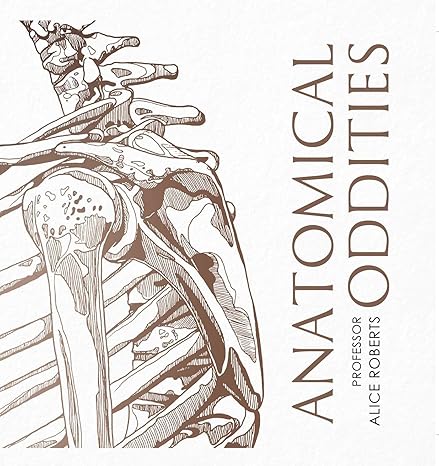It turns out I could not resist another Alice Roberts book, this time Anatomical Oddities. I must admit this book was not what I expected – chapters on different, possibly pathological aspects of human anatomy. It turns out it is a book of illustrations of anatomical features of the human body with a brief description of the etymology of their name.
As such I am struggling to work out how to review it!
There are about 60 illustrations, each with a facing page of text describing the etymology of their names. There is no overall organisational structure to the book that I can discern, it does not work its way systematically through the body by location, organ type, linguistic root or anything else.
Illustration is key in both anatomy and archaeology – Roberts’ fields of study. The camera can capture very literally what we see but are not so good at showing what we know to be there or placing appropriate emphasis on the key parts of a scene. Roberts is a fine illustrator, so the illustrations in the book are pleasing. Some are straightforward anatomical illustrations, some are more whimsical (a sphincter with legs), others borrow from classical sources (the Achilles tendon is illustrated in the style of ancient Greek pottery)
Some anatomical structures are named for people, typically their discoverer – for example the “Islets of Langerhans”, which I think sounds like an excellent holiday destination, are found in the pancreas where they make insulin. They were discovered by Paul Langerhans in 1869. Who, we learn, had no idea what they did and died at the age of 40.
Other structures are named via convoluted Classical roots, the “arachnoid mater”, for example. The brain is shrouded in three membranes (meninges from the ancient Greek), the pia mater, the arachnoid mater and the dura mater or in English: the pious mother, the cobweb mother, and the hard mother. These are translations to Latin of Arabic terms from the first millennium.
The audience is another puzzle, in places the vocabulary implies a target of the interested teenager but a small amount of the content is not what you’d give your 12 year old. In the end I came to the conclusion that is intended for first year anatomy students and Roberts’ own amusement.
All of this sounds rather negative but in the end I enjoyed the book for what it was, once I’d given up my preconceptions as to what format a book that I review should take.


